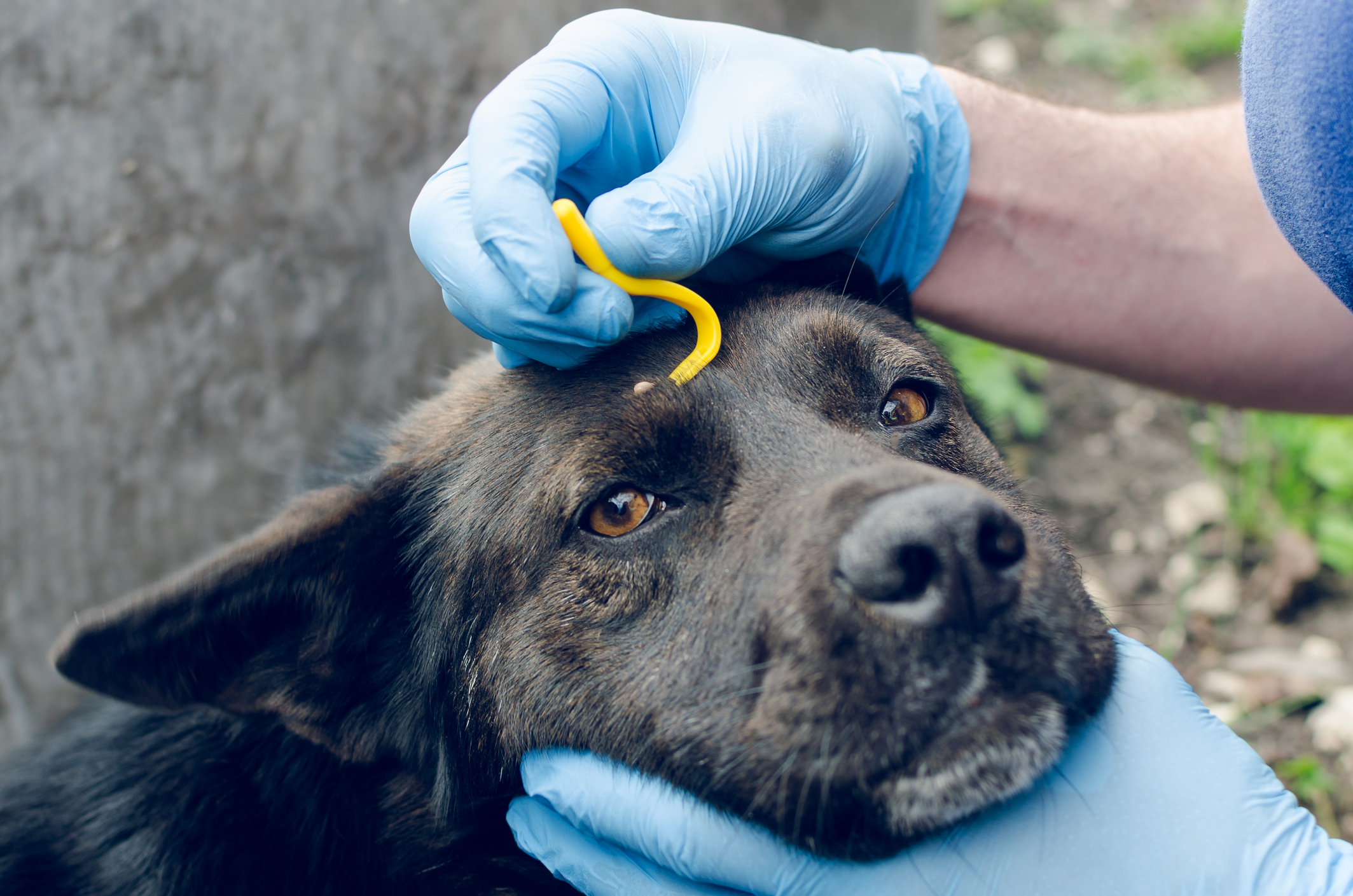Main Index
In Store
Our Web Store
Miniature Schnauzer Picture Gallery
Latest Dog Blogs
- What Are The Basic Commands To Train A Dog?
- PaySafe As The Most Popular Type Of Deposit
- Everything You Need To Know About Pet Sales
- Dogs Contribute To Our Physical And Mental Well Being
- How To Choose Where To Bet On Greyhounds In 2022
- Volunteer With Animals - How To Help Dogs Around The World
- Basic Understanding Of The House Edge
- Why You Should Get A Dog
- Top 20 Popular Dog Names Around The World
- Constipation in Dogs and How to Find Solutions
How To Remove A Tick From Your Dog
- 07/06/2020
Ticks are disease-transmitting creatures, and their bites can be dangerous for both humans and dogs. Here's how you can remove a tick from a dog.
A tick bite can transmit microbes and potentially dangerous diseases such as Lyme disease. Although ticks are especially common between spring and autumn, ticks are active throughout the year. Analysis by SEMrush from February to April found web search in the term ‘how to remove ticks from dogs’ increased by 661.54 percent.
What is a tick?
Ticks are insects which can climb onto your dog and embed themselves to suck their blood.
Ticks look similar to spiders, and are egg-shaped with eight legs.
A tick can vary in size, from between 1mm and 1cm long.
A tick may look like a small lump if it is embedded in your pet’s skin, but after sucking blood a tick can grow larger.
If you find a tick on your dog, it is incredibly important to remove the tick as soon as possible and to seek veterinary advice.
In addition to Lyme disease, ticks can spread babesiosis which can also be fatal.
When checking your dogs for ticks, pay particular attention to your dog’s ears, head, neck, groin, armpits and feet.
How to remove tick from a dog
Before removing a tick from a dog, you should get advice from a vet.
The PDSA advice on how to remove a tick from a dog is as follows: “The sooner you remove the tick the better – the longer the tick is attached, the higher the risk of it spreading Lyme disease.
“Don’t crush or squeeze the tick’s body and don’t try and destroy the tick with a lighted match.
“Don’t put Vaseline on the tick as it may drop off but can still be alive to bite another victim.
“Get advice from a vet before removing a tick from your pet - it’s easy to remove the body of the tick and leave the mouth behind in the skin. If the tick isn’t fully removed it could cause an infection.
“Special tick tweezers are available to buy, but need to be used carefully as per the instructions.
“You can also use normal tweezers, but be careful with your technique – grasp the tick as close to the skin as possible and pull gently and steadily straight up.
“Once you’ve removed the tick, gently cleanse the area and keep an eye on your pet for any symptoms.
“You can keep the tick in a sealed container or give it to your vet to send for testing. This is an especially good idea if you are concerned about Lyme disease.”
If you suspect your dog is unwell after being bitten by a tick, seek veterinary attention immediately.
There are some steps you can take to help protect your pet from ticks in the future.
Some flea treatments kill or repel ticks, and if you are planning a holiday with your dog check how common ticks are in the local area.
Ticks are common in woodland and grassland, but also in gardens, and it's always a good idea to check yourself and your dog for ticks after a walk.
If you are worried about your dog and ticks, consult your vet for further advice on prevention.
Please Help Us
IrishDogs.ie takes a lot of time, money and hard work to produce. But we do it because we believe our perspective matters because it might well be your perspective, too.
Our future could be much more secure with your help. Please SUPPORT us by clicking on the Donate Button at the Top Right of your screen.
Quick Search
Donate
Latest Dog Pods
- Tips on How to Stop Your Dog from Biting
- Beware - Not All Advertised Dog Rescues Really Are! How Can You Know The Truth?
- Helpful Tips For Dog Obedience Problems
- How to Keep Dogs From Eating Poop
- Dog Grooming Tips - A General Overview of the Very Basics of Dog Grooming
- Recognising Different Types of Dog Obedience Problems
- 5 Important Tips On Feeding A Puppy



